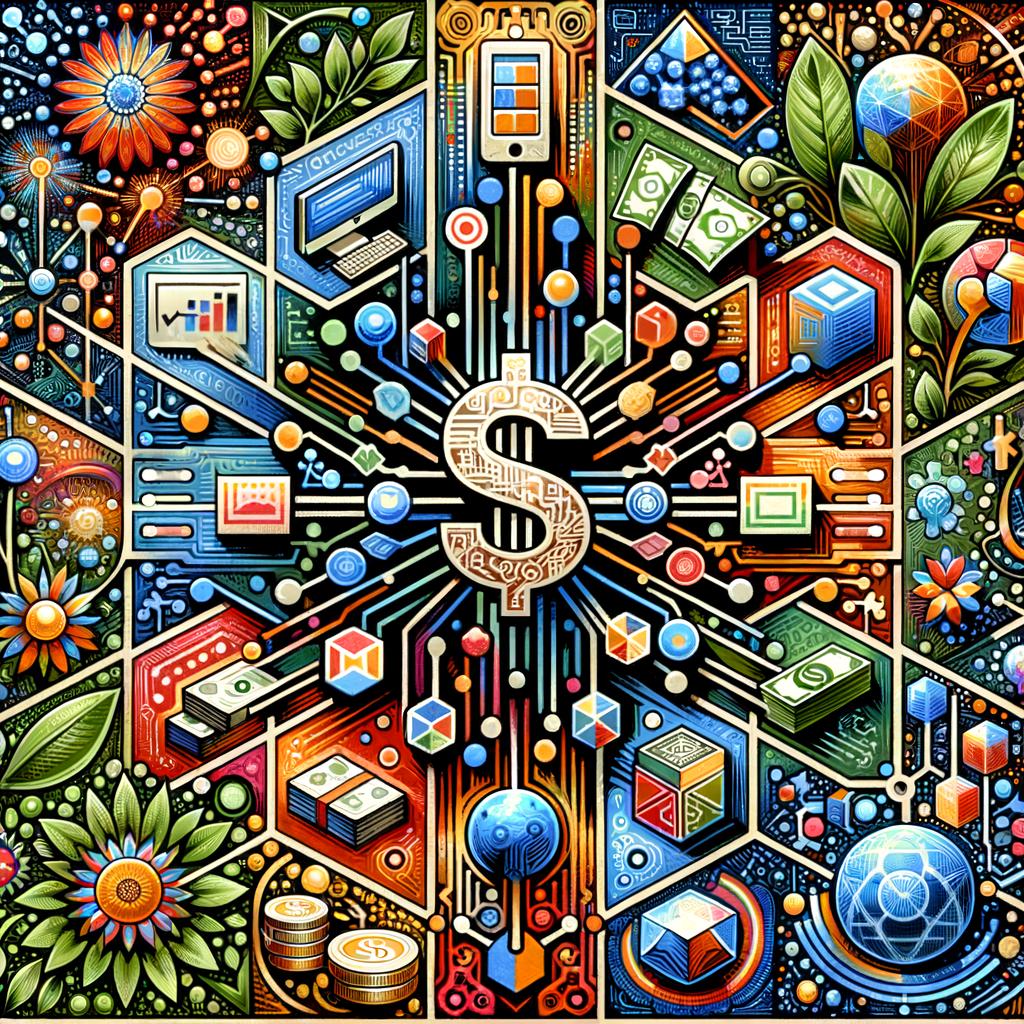Analyzing the Shift in Consumer Payment Preferences Post-Pandemic
Are you tired of searching for loose change in the depths of your pockets? Do you miss the sound of crisp dollar bills sliding through your fingers? Well, fret not, my cash-crazy comrades, because the pandemic just flipped the script on consumer payment preferences! In this article, we’ll take a dive into the fascinating world of how our beloved payment methods have evolved in the wake of this global disruption. So, grab your smartphone, tap that contactless payment option, and get ready to uncover the juicy details of this post-pandemic payment revolution!
The post-pandemic shift: Consumer payment preferences reimagined
As the world slowly emerges from the grip of the pandemic, a seismic shift in consumer payment preferences has taken center stage. The ways in which we pay for products and services have been reimagined, reflecting both the lingering impact of COVID-19 and the rapidly evolving landscape of digital innovation.
<p>One notable change is the surge in contactless payments. With concerns over physical touch, consumers have embraced tap-and-go solutions like never before. Payment methods such as mobile wallets, which allow transactions to be processed with just a wave of a smartphone, have skyrocketed in popularity. The convenience, speed, and enhanced hygiene offered by contactless payments have made them the preferred choice for many.</p>
<p>Another area of transformation is the proliferation of digital wallets. These virtual alternatives to traditional cash and cards have gained significant traction, providing a seamless and secure way to manage finances. Whether it's Apple Pay, Google Pay, or PayPal, digital wallets offer the convenience of storing multiple payment methods in one place. With just a few taps on a screen, customers can complete transactions across a wide range of online platforms.</p>
<p>In the realm of e-commerce, the post-pandemic landscape has witnessed a surge in buy-now-pay-later (BNPL) services. This innovative approach allows consumers to split their purchases into interest-free installments, alleviating the immediate financial burden. BNPL platforms like Klarna, Afterpay, and Affirm have captured the attention of shoppers looking for flexibility and convenience, allowing them to budget their spending without relying on credit cards.</p>
<p>This shift in payment preferences presents both opportunities and challenges for businesses. Adapting to these changing consumer behaviors is crucial to remain competitive in the digital age. By embracing contactless payments, offering a variety of digital wallet options, and even partnering with BNPL providers, companies can cater to the evolving demands of customers, ensuring a seamless and user-friendly payment experience.</p>
Unveiling the driving forces behind changing consumer payment habits
As the world continues to navigate through the aftermath of the pandemic, consumer payment preferences have undergone a significant shift. With social distancing measures and a surge in online shopping, it comes as no surprise that traditional payment methods have taken a backseat. This shift unveils the driving forces behind changing consumer payment habits.
Firstly, the convenience and security of contactless payments have skyrocketed in popularity. With a simple tap or wave of a card, consumers can make purchases swiftly and safely without the need for physical contact. This has been a game-changer, especially during the pandemic, as it minimizes the risk of spreading germs. Additionally, the rise of mobile payment apps, such as Apple Pay and Google Pay, has further fueled the adoption of contactless payments. These apps provide a seamless and convenient way to make transactions through smartphones, thereby eliminating the need for physical cards altogether.
Insights into the evolving landscape: From cash to contactless payments
In today’s ever-changing world, it is undeniable that the COVID-19 pandemic has had a profound impact on our lives, influencing every aspect from health and social interactions to technology and finance. As the world gradually adapts to the new normal, one area that has witnessed a significant shift is consumer payment preferences. Gone are the days when cash used to be king, as contactless payments now reign supreme.
So, what are the insights into this evolving landscape? Let’s take a closer look at the reasons behind this dramatic change:
- Hygiene and Safety: The pandemic has heightened our awareness of germs and the importance of maintaining cleanliness. Contactless payments, whether through mobile wallets or cards with built-in NFC technology, provide a touch-free solution that minimizes the risk of transmission compared to handling cash.
- Convenience and Speed: In our fast-paced world, where time is of the essence, contactless payments offer unparalleled convenience and speed. With just a simple tap or wave of a card, transactions are completed swiftly, eliminating the need to fumble for cash or enter PIN codes. This seamless experience has become particularly appealing in the era of social distancing, where reducing contact and queuing time is paramount.
Embrace the wave: Recommendations for businesses to adapt to new payment trends
Ready to ride the wave of changing payment preferences in the post-pandemic era? As businesses navigate the evolving landscape, it’s crucial to adapt to new trends to meet customer expectations and boost sales. Here are some innovative recommendations to help your business stay ahead!
Offer a Variety of Payment Options
One size doesn’t fit all when it comes to payments. Give your customers the flexibility they crave by embracing a range of payment methods. Whether it’s traditional credit/debit cards, mobile wallets like Apple Pay and Google Pay, or even cryptocurrencies, having multiple options allows customers to choose what works best for them. Don’t forget to prominently display the accepted payment methods to instill confidence in your consumers.
Highlighting the security features of each payment option can also alleviate customer concerns. Encryption, tokenization, and secure payment gateways provide customers with peace of mind, making them more likely to make a purchase.
Enhance the Checkout Experience
Long, complicated checkout processes can deter customers and lead to abandoned carts. Streamline your checkout experience to speed up conversions and boost customer satisfaction. Opt for one-click or guest checkout options, allowing customers to complete their purchases quickly without unnecessary account creation.
Invest in a reliable payment processor with features like automatic address completion and card scanning to minimize manual data entry. Additionally, consider implementing a real-time order tracking system that provides customers with updates on their purchases, building trust and fostering repeat business.
Concluding Remarks
And there you have it, folks! We’ve taken a deep dive into the world of consumer payment preferences post-pandemic. From contactless payments to the rise of digital wallets, it’s clear that the way we pay has undergone a radical transformation.
As we bid farewell to the days of fumbling for loose change and writing checks, a new era of convenience and security has taken its place. With the tap of a card or the swipe of our phone, we can effortlessly complete transactions, whether we’re shopping online or at our favorite local coffee shop.
But it’s not just the ease of payment that has changed; our mindset around money has shifted as well. The pandemic has forced us to embrace the digital realm more than ever before, bringing with it a newfound appreciation for online banking and virtual transactions. We’ve grown comfortable with managing our finances remotely, empowering us to take control of our spending like never before.
While some may mourn the demise of the physical dollar bill, others are ready to embrace this transformative shift with open arms. The security and convenience that digital payments bring are difficult to ignore. No more rummaging through our wallets or worrying about lost or stolen cash. With these new payment methods, our funds are safely stored on our devices, ready to be used at a moment’s notice.
So, as we move forward into a post-pandemic world, it’s clear that consumer payment preferences have changed for good. The days of tangible currency may not be completely gone, but they are certainly fading into the background. As technology continues to evolve and new innovations emerge, who knows what the future of payments holds? One thing’s for certain – we’ve come a long way from the days of carrying around a wad of cash.






